Famous for the Great Wildebeest Migration, the Serengeti National Park is the jewel in Tanzania’s crown. With around 1.5 million wildebeest and thousands of other grazing animals and predators, an action-packed safari is guaranteed.
I myself have gone on several safaris in the Serengeti National Park and each one has left me feeling amazed by the sheer volume of plant and wildlife species which can be found in this unique ecosystem.
In this article, I will give you a detailed guide on the Serengeti National Park, focusing on why it's so famous and how to enjoy an epic safari there.
Let's dive in!
My Quick Takeaways:
A UNESCO World Heritage Site, the Serengeti is renowned for its vast ecosystems and the annual Great Wildebeest Migration.
Key Regions:
- Serengeti Plains: Southern treeless grasslands where wildebeest breed from December to May; dotted with granite mounds serving as predator lookouts.
- Western Corridor: Characterised by black clay soil and the Grumeti River, home to large Nile crocodiles; migration passes through from May to July.
- Northern Serengeti: Dominated by open woodlands and hills, extending to the Mara River; ideal for spotting elephants, giraffes, and dik-diks.
Climate in the Serengeti:
- Dry Season (June - October): Mild temperatures (25–31°C/77-88°F); best for wildlife viewing as animals gather near water sources.
- Wet Season (November - May): Short rains in November-December; long rains from March-May; lush landscapes but some areas may be less accessible.
Wildlife Highlights:
- Predators: Home to around 3,000 lions, 1,000 leopards, and 500 cheetahs; also features hyenas, jackals, and occasional wild dogs.
- Herbivores: Hosts millions of wildebeest and zebras during migration; also includes gazelles, elephants, buffalo, and giraffes.
- Birdlife: Over 500 species, including ostriches, secretary birds, and various raptors.
Best Visiting Times:
- June - October: Ideal for general wildlife viewing during the dry season.
- January - February: Calving season in the southern plains; excellent for predator interactions.
- June - September: Witness dramatic river crossings during the Great Migration.
Check out the best time to visit the Serengeti for more info.
Things to do in the Serengeti:
- Game Drives: Explore diverse habitats and observe wildlife behaviors.
- Walking Safaris: Guided walks offer a closer connection to the environment.
- Balloon Safaris: Experience aerial views of the landscape and wildlife.
Accommodation in the Serengeti National Park:
- Luxury Lodges: High-end amenities with prime wildlife viewing locations.
- Tented Camps: Blend of comfort and immersion in nature.
- Budget Options: Affordable stays with essential facilities.
Here are my recommendations for the best Serengeti National Park hotels.
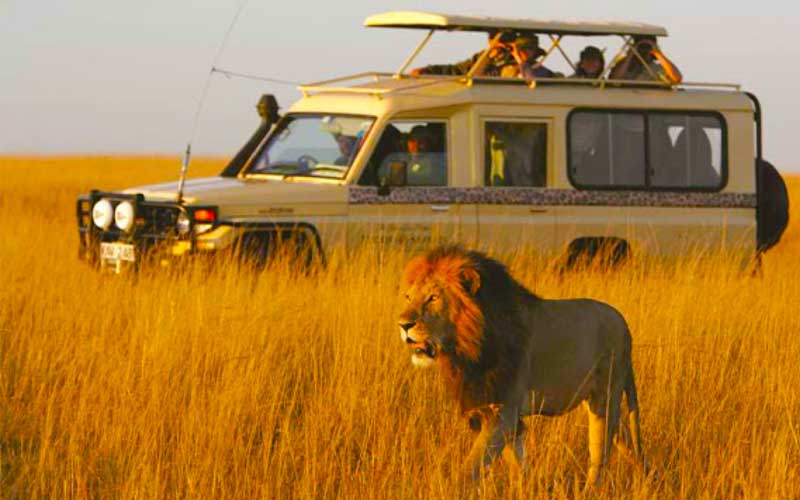
Plan your Safari experience
Check out these amazing deals on epic safari experiences now.
Serengeti National Park FAQs
What makes Serengeti National Park so special?
The Serengeti National Park is so special for several reasons. First off, it's a designated UNESCO World Heritage Site and considered one of Africa’s Seven Natural Wonders.
It is one of the most popular safari destinations in the world, attracting hundreds of thousands of visitors each year.
Which tour? Here are 5 Serengeti safari tours I highly recommend:
- Group Camping Safari that includes Tarangire and Ngorongoro (4 days)
- Budget Serengeti Safari (5 days)
- Scenic Northern Tanzania Safari (7 days)
- Serengeti Trail that includes Ngorongoro (8 days)
- Best of Kenya and Tanzania (incl. 6 national parks) (12 days)
See more Serengeti safari deals.
What parts of the Serengeti National Park can I visit?
Serengeti National Park is split into three distinct regions that tourists can visit and explore diverse ecosystems:
- Serengeti Plains
- Western Corridor
- Northern Serengeti
Three Areas of Serengeti Plains
The 15,000 square kilometre Serengeti National Park is unfenced and forms part of the 30,000 square kilometres Greater Serengeti Ecosystem, also including the fascinating Ngorongoro Crater.
It is in the northwest of Tanzania, bordered to the north by the Kenyan border, where it continues with the Maasai Mara National Reserve.
See more info in our Tanzania Safari Map guide to orient yourself better with the Serengeti's location.
Serengeti Plains
The endless, almost treeless grassland of the south. This is where the wildebeest breed, as they stay in the plains from December to May.
Granite mounds, or koppies, are very common in the region and great observation posts for predators, and a refuge for hyrax and pythons.
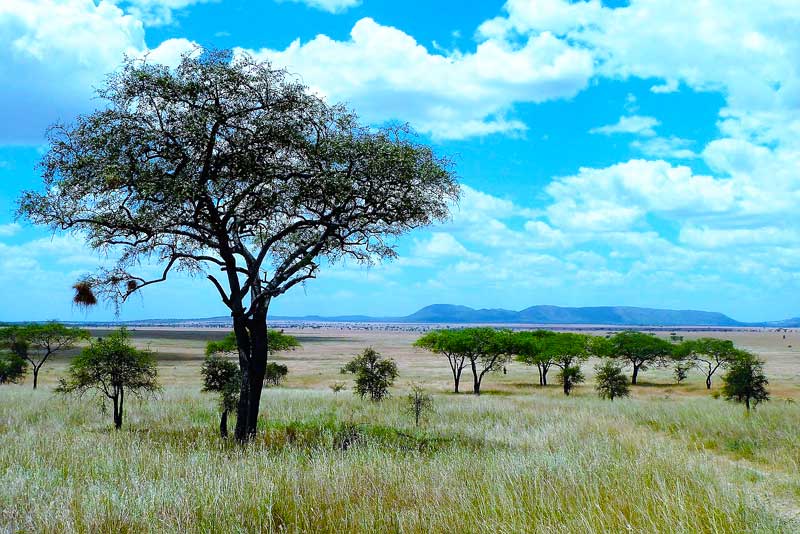
Western Corridor
Black clay soil covers the swampy savannah of this region. The Grumeti River is home to enormous Nile crocodiles, colobus monkeys and martial eagles. The migration passes through from May to July.
Northern Serengeti
The landscape is dominated by open woodlands and hills, from Seronera in the South to the Mara River into Kenya. Apart from the migratory wildebeest and zebra, the bushy savannah is the best place to find elephants, giraffes and dik-dik.
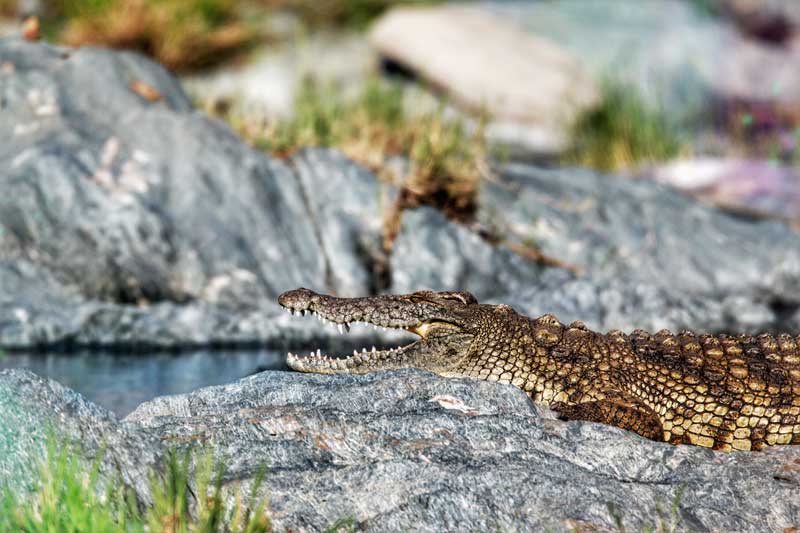
Serengeti Rivers
There are five rivers in the Serengeti National Park that feed the landscape and provide sustenance to its inhabitants.
The Grumeti River, Mara River, Mbalageti River and Orangi River flow westward to Lake Victoria, while the Oldupai River flows eastward into the Olbalbal Swamps.
The Grumeti River is a major river crossing for the Great Migration. Between May and August, thousands of wildebeest and other animals cross the crocodile-infested waters. For every one wildebeest captured by the crocodiles, 50 drown.
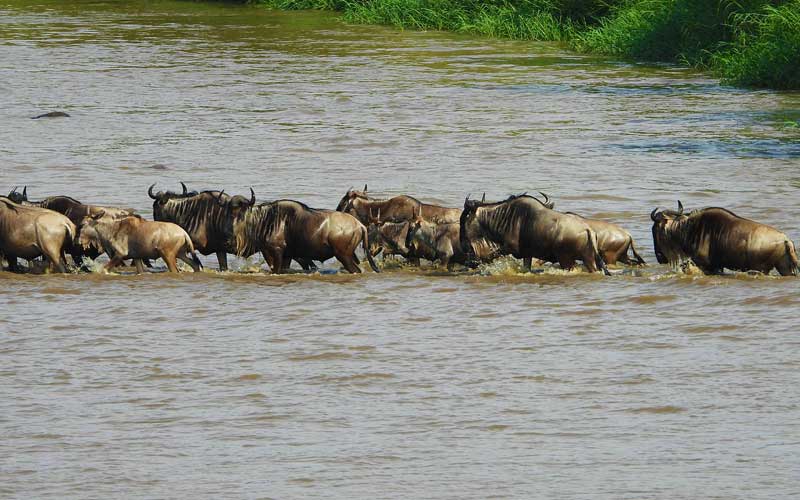
What is the weather and climate like in the Serengeti National Park?
The Serengeti National Park falls into the classic weather pattern of East Africa – the long rains between March and May and the short rains in November and December.
The hottest and most humid period stretches between November and February (25–31°C/77-88F) while the coolest period occurs between May and August (15–20°C/59-68F).
Like much of East Africa, the Serengeti has two distinct seasons: the dry season and the wet season.
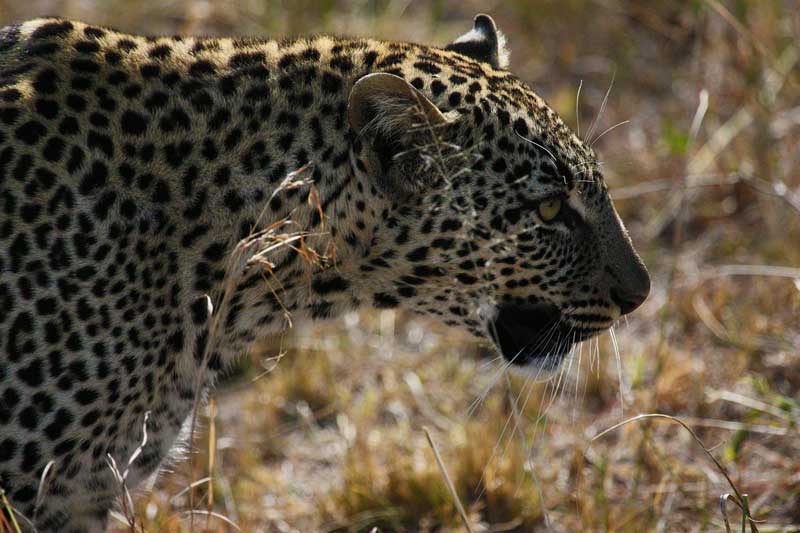
Dry Season
The dry season between June and October is usually the best time to go on a safari in the Serengeti National Park. This is when the weather is moderate with average daytime temperatures in the mid to high 20 degrees Celsius.
During the dry season, the vegetation also thins out, making it easier to spot wildlife. The big game also tends to flock to available water sources, so sightings of herds and prides gathered around waterholes is fairly common.
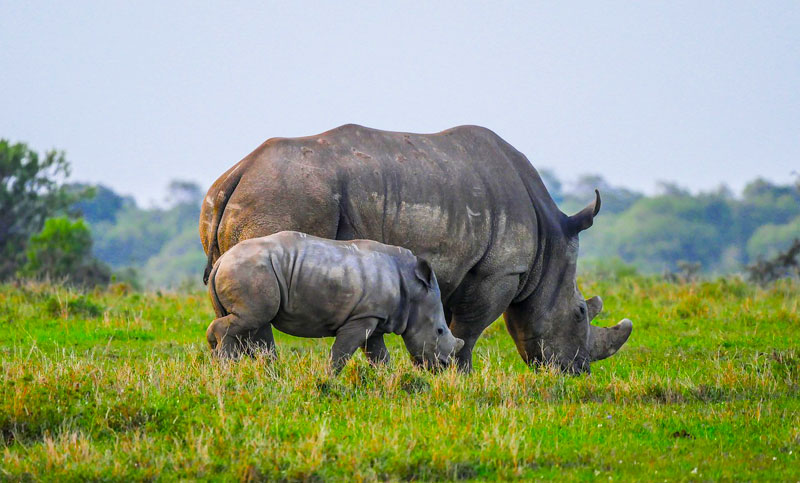
Wet season
The short rains in November and December in the Serengeti National Park will bring respite from the hot and humid conditions.
The long rains between March and May are accompanied by heavy downpours that can ruin safari outings.
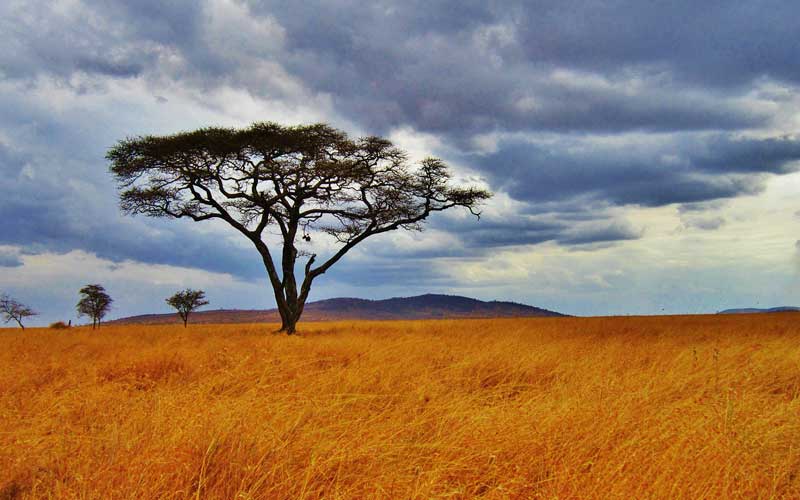
When is the best time to visit Serengeti National Park?
The best time to visit the Serengeti is between June and October when the Great Migration is at its height.
It is the dry season and overall provides the best opportunity for spotting wildlife such as black rhino, plains game, predators, elephants, and more.
This is also the time to witness incredible predator kills on the banks of the Mara and Grumeti Rivers. Ferocious crocodile populations lunge at wildebeest and other plains game on the riverbanks, putting on quite a show for onlookers.
July is reportedly the best month for predator kill sightings.
Another good time to visit the Serengeti is between January and February, and during the spring months from March to May (low season).
Outside of the high safari season, the accommodation tends to be cheaper, but some of the mobile camps might not be in operation.
A trip should be planned around the movement of the great migration.
How do I get to Serengeti National Park?
To get to the Serengeti National Park, most visitors fly into Tanzania’s Kilimanjaro International Airport and then take a flight from Arusha (less than 50 kilometres away) to several airstrips located inside the park.
My Pro Tip: A word of caution – limit luggage to 15 kilograms per person, and rather use soft bags instead of hard-sided suitcases when travelling to Tanzania.
It is also possible to fly into Julius Nyerere International Airport, just outside of Dar es Salaam, and then fly on to Kilimanjaro International Airport (JRO).
One can also travel to the Serengeti via road from Arusha and enter the park through the Naabi Hill Gate. The distance is 325 km and the drive takes around eight hours.
How should I plan for a safari in Serengeti National Park?
The best ways to plan a typical safari in Serengeti National Park are to find accommodation where you'll be most comfortable and book specialised tours and activities you'll enjoy the most.
Find Accommodation in the Serengeti
A safari to the Serengeti National Park typically includes accommodation, all meals, activities, private walks, transfers and local drinks. Because there aren’t any shops and practically no civilisation, everything is included in the rate.
Some camps and Serengeti resorts are more expensive than others, and some are completely remote which hikes the price up by quite a bit.
A good budget to work with is $500 to $1000 per person sharing per night (see my guide on Tanzania safari costs).
For a two week safari, it’s advisable to set aside about $11,000 for a mid to luxury safari in a Serengeti camp.
However, an optimal time on safari is seven nights. Because the terrain is so vast and there’s so much to see, a minimum of four full days on safari is best. Any less than this isn’t recommended.
If you go on an organised safari with a local tour operator, you will mostly sleep in mobile camps. Here, facilities are more limited.
The tents usually have simple beds with lining and duvets, camping toilets and showers depending on the safari operator you make your booking through.
Read some of my Serengeti hotel reviews:
Where to stay? Here are 5 of my favourite accommodation options in the Serengeti:
- Africa Safari Serengeti Ikoma
- Serengeti Serena Safari Lodge
- Ole Serai Luxury Camp
- Asanja Africa
- Melia Serengeti Lodge
See more Serengeti accommodation options.
Choose Different Serengeti Activities
There are countless options when it comes to exploring the Serengeti National Park and experiencing all that this natural gem has to offer.
- A balloon safari over the Serengeti for an aerial view of landscapes and wildlife comes highly recommended.
- Learn about the history of the Serengeti National Park at Olduvai Gorge, otherwise known as the Cradle of Humankind.
- The best way to explore the varied terrain is to go on a Serengeti game drive. Guided game drives led by professional field guides cover a lot of ground, and normally take place in the early morning and late evening when predators are most active.
- Guided Serengeti walking safaris are normally conducted by qualified guides, and offer an immersive experience in the Serengeti.
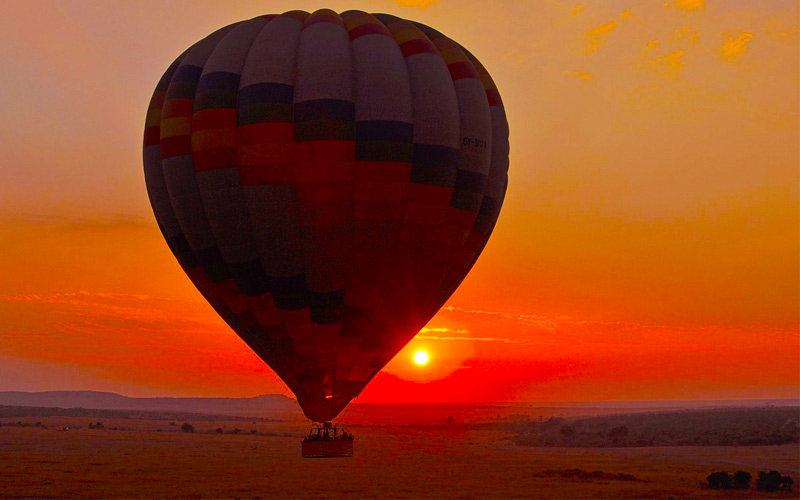
Book a Serengeti Balloon Safari
Check out this awesome tour from our recommended local partner
What wildlife can I see in Serengeti National Park?
With them numbering in thousands and millions, there are numerous wildlife species you can see in the Serengeti National Park at any time of the year.
Predators
One of the largest populations of lions in Africa – 3,000, as well as 1,000 leopards and 500 cheetahs, call Serengeti their home.
There are also more than 8000 spotted hyenas as well as side-striped, black-backed and golden jackals. Wild dogs are however scarce.
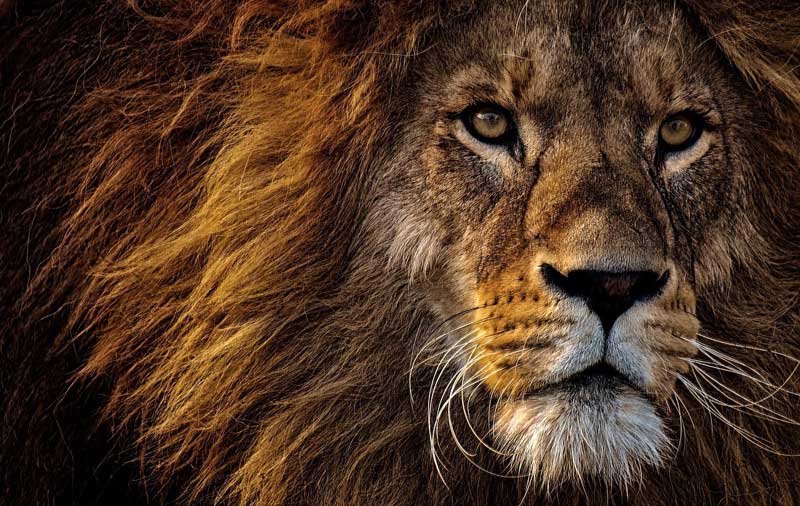
Grazing Animals
Apart from the millions of wildebeest and zebra that make up most of the Great Migration, grazers like Grant’s and Thomson’s gazelle, topi, waterbuck, eland, African elephant, Cape buffalo and warthog also occur in the Serengeti National Park.
The park can sustain them all because each species, even those that are closely related, has a different diet. For example, wildebeests prefer to consume shorter grasses, while plains zebras prefer taller ones.
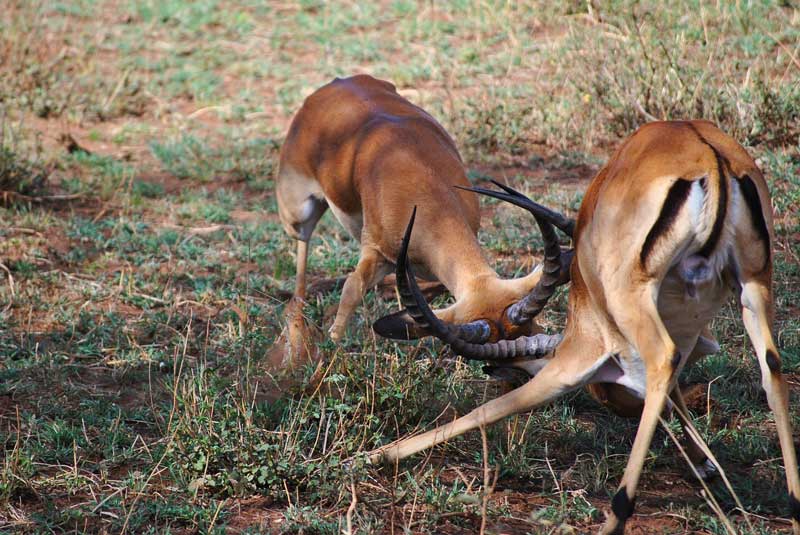
Wildebeest
The Serengeti National Park is famed for its annual wildebeest migration when some 8 million hooves cross the open plains.
More than 1,500,000 wildebeest, 200,000 zebra and 300,000 Thomson’s gazelle join this trek driven by the need for fresh grazing.
Predators follow the migration and sightings of big cats hunting is always particularly exciting for even the most experienced traveller. Spotted hyena, golden and black-backed jackal are never far off either.
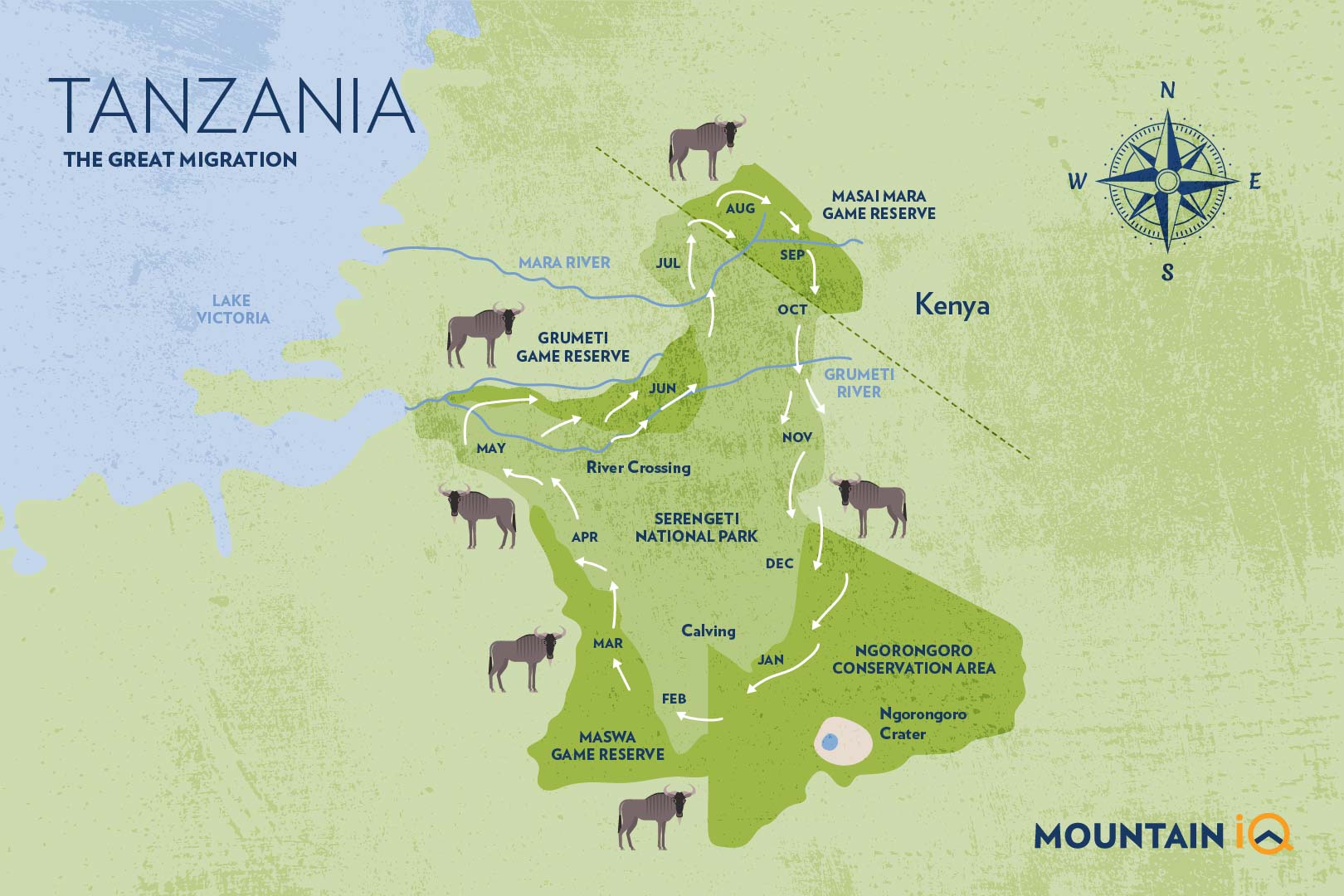
Birdwatching
With more than 500 species of birds, the Serengeti is a birdwatching paradise. These include the Masai ostrich, secretary bird, kori bustard, grey-breasted spurfowl, blacksmith lapwing, African collared dove, Southern ground hornbill, crowned crane, knob-billed duck, spotted thick-knee, white stork and lesser flamingo.
Additionally, there are also 34 raptor species and six species of vulture.
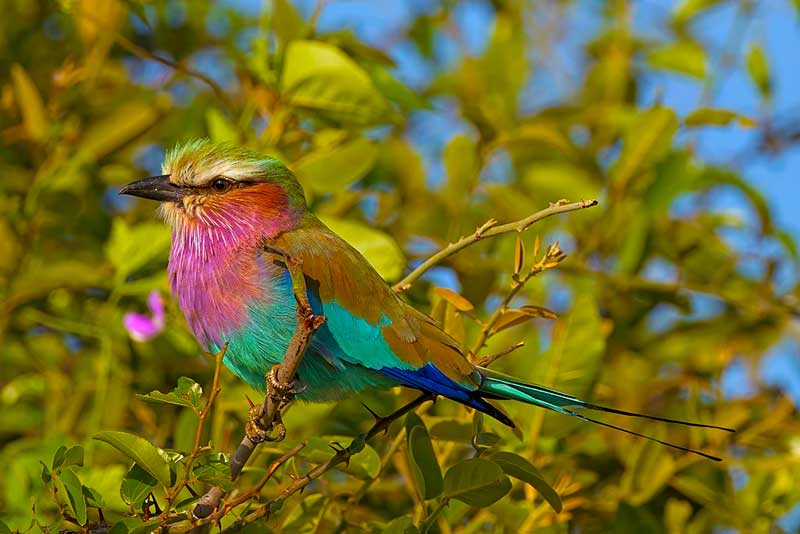
What are some interesting facts about the Serengeti National Park?
Here are some interesting facts about the Serengeti National Park that you didn't already know:
- The word 'Serengeti' is derived from the words 'Seringit' and 'Maa' in the Maasai dialect, which means 'Endless Plains'.
- Over 200,000 species of plains game, elephant and rhino are killed annually by poachers. The Maasai people are the guardians of the Serengeti ecosystem, and these communities are involved in protecting species to prevent a decline in numbers. One such initiative is the Mara Elephant Project.
- In the mid 1990s, a vicious virus called canine distemper killed off 35% of the Serengeti National Park’s lion population, but the numbers increased and recovered in the following five years.
- Elephants weren’t always in the national park, but did occur on the periphery. The elephants migrated into the park when the farming lands grew, and more people moved in for agriculture. Currently, there are an estimated 1,360 elephants in the park, and over 8,000 elephants in the Serengeti ecosystem.
Which tour? Here are 5 Serengeti safari tours I highly recommend:
- Group Camping Safari that includes Tarangire and Ngorongoro (4 days)
- Budget Serengeti Safari (5 days)
- Scenic Northern Tanzania Safari (7 days)
- Serengeti Trail that includes Ngorongoro (8 days)
- Best of Kenya and Tanzania (incl. 6 national parks) (12 days)
See more Serengeti safari deals.
Conclusion
And that's a wrap on the Serengeti National Park FAQs! I hope you learnt some valuable information before booking a trip to one of the largest and most celebrated wildlife conservation areas in the world.
